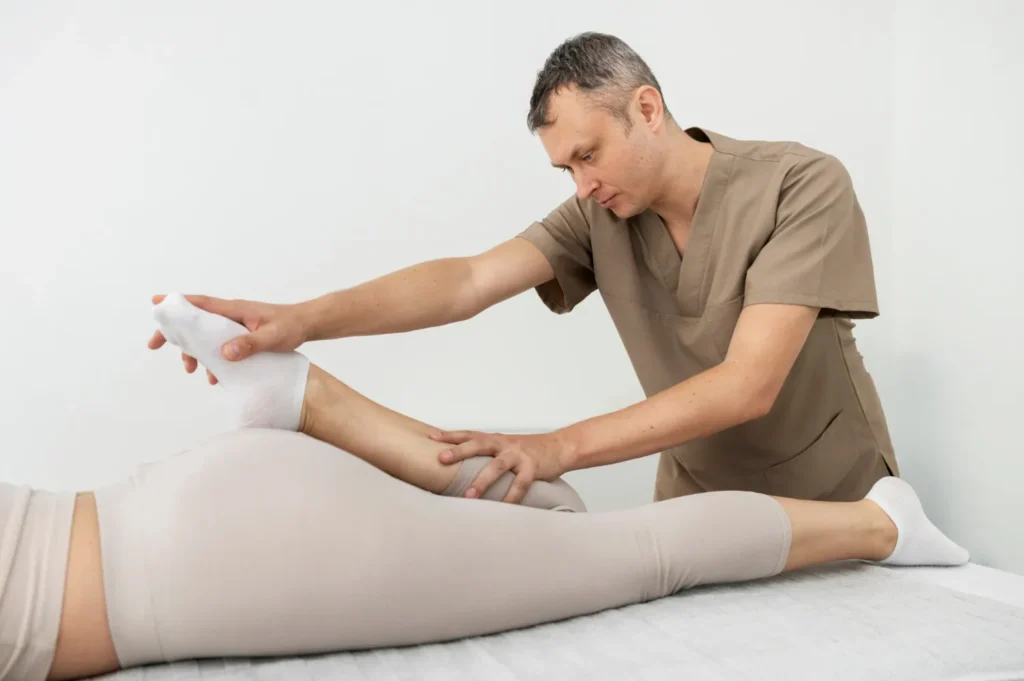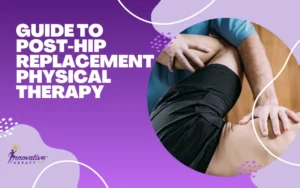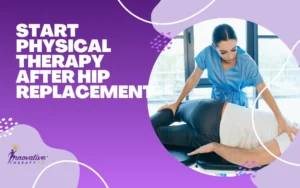Hip replacement surgery marks a pivotal step towards reclaiming an active lifestyle for individuals suffering from debilitating joint pain. This surgery not only alleviates discomfort but also restores mobility, allowing patients to engage more fully in life’s activities. However, the journey to optimal recovery extends far beyond the operating room. Post-Hip Replacement Physical Therapy is crucial in ensuring the longevity and effectiveness of the hip implant. A meticulously planned therapy regimen helps patients adapt to their new joint, preventing complications and enhancing the functional capabilities of the implant. Through targeted exercises and expert guidance, therapy after surgery addresses both physical and psychological recovery, ensuring patients can return to their daily routines with confidence and less dependency.
Understanding Post-Hip Replacement Physical Therapy
Recovery from physical therapy after hip surgery involves several vital phases, each crucial for regaining full mobility and strength. This section delves into what patients can expect throughout their rehabilitation journey, highlighting the critical stages and timelines involved.

Stages of Recovery Post-Surgery
The recovery after hip replacement surgery is a graduated process meticulously tailored to accommodate the healing timeline and physical rehabilitation needs of each patient. Initially, the focus lies on managing post-surgical pain and mitigating risks of infection and blood clots. This stage requires careful monitoring and the use of medications to ensure comfort and safety. As healing progresses, patients transition into more active rehabilitation phases, which are crucial for restoring range of motion and preventing scar tissue formation.
Techniques such as gentle stretching and flexion exercises are introduced under the supervision of a skilled therapist. The subsequent phase shifts focus towards strengthening exercises that rebuild muscle mass and improve support around the new joint. Each of these stages is designed to build upon the previous, gradually enhancing the patient’s strength and mobility to facilitate a return to everyday activities.
Common Challenges Faced During the Recovery Process
Recovery from hip replacement surgery can be fraught with challenges that vary widely among patients. Common issues include managing pain levels, which can be significant in the days following surgery. Physical therapists play a crucial role in teaching pain management techniques that do not rely solely on medication, such as ice therapy, elevation, and the use of compression garments. Another significant challenge is the risk of dislocation of the new hip joint.
Patients must adhere to strict movement restrictions to prevent this, especially in the first few weeks post-surgery. Mobility challenges also extend to daily activities, with patients often requiring modifications to their home environment to navigate safely. Overcoming these hurdles is crucial for a successful recovery, and it requires both education and active participation from patients and their caregivers.
Essential Physical Therapy Techniques Post-Hip Replacement
Effective physical therapy is fundamental to a successful recovery from hip replacement surgery. Here, we explore the targeted techniques and exercises designed to restore movement, build strength, and ensure the longevity of your hip implant.
Initial Phase: Gentle Range of Motion (ROM) Exercises and Movements
The initial phase of Post-Hip Replacement Physical Therapy focuses on restoring basic joint movement while ensuring the integrity of the surgical site. Gentle range of motion exercises are introduced to maintain joint flexibility and circulate blood to the affected area, promoting healing. These exercises, such as ankle pumps and seated knee extensions, are critical in preventing joint stiffness and muscle atrophy. The therapist carefully monitors the patient’s technique and tolerance to these activities, gradually increasing the range as the healing progresses. This phase lays the foundational mobility required for more intensive strengthening exercises in later stages.
Intermediate Phase: Strengthening Exercises and Flexibility Training
As patients move into the intermediate phase of recovery, the focus shifts to rebuilding strength and enhancing flexibility. This stage integrates more dynamic exercises that challenge the muscles supporting the hip joint. Key activities include leg lifts, standing hip extensions, and light resistance training using bands or weights. Flexibility training also becomes a priority, with therapists guiding patients through stretches that target the hip flexors, hamstrings, and quadriceps. These exercises are crucial for restoring the functional range of motion and preparing the body for everyday tasks and eventual return to recreational activities.
Advanced Phase: Conditioning for Returning to Daily Activities
The advanced phase of Post-Hip Replacement Physical Therapy is tailored towards fully reintegrating patients into their daily lives. This phase focuses on conditioning exercises that simulate day-to-day activities, such as walking, climbing stairs, and other movements that the patient will need to perform at home and in the workplace. The therapy may also incorporate specific drills for balance and agility to enhance proprioception, which is often compromised after hip surgery. The goal is to ensure that patients not only regain their pre-surgery mobility but also improve their overall physical fitness to prevent future injuries and enhance their quality of life.
Special Considerations for Different Patient Groups

Each patient’s recovery journey is unique and influenced by their lifestyle, health status, and personal goals. This section discusses tailored strategies that address the specific needs of diverse patient groups, from seniors to athletes.
Tailored Strategies for Seniors Seeking Active Lifestyles
Senior patients undergoing hip replacement often have the specific goal of returning to an active lifestyle, which may include gardening, walking, and participating in community activities. For this demographic, Post-Hip Replacement Physical Therapy focuses on exercises that increase joint stability and balance, reducing the risk of falls. Strength training is tailored to be low-impact, with a significant focus on building core strength and improving coordination. Additionally, therapists often recommend water-based exercises, which allow for muscle strengthening without putting excessive stress on the new hip. Each regimen is personalized, considering the patient’s pre-surgery activity level and overall health, aiming to enhance mobility and independence.
Modifications for Athletes and Active Professionals
Athletes and active professionals require a more rigorous rehabilitation approach to meet the demands of their high-energy lifestyles. Post-Hip Replacement Physical Therapy for this group is designed to return them to their peak performance levels. Rehabilitation focuses on not only restoring strength and flexibility but also on sports-specific training and conditioning. This could include plyometrics, sprint drills, and agility training, depending on the athlete’s sport. The therapy is highly customized, often conducted in collaboration with sports trainers to ensure that the exercises align with the athlete’s professional needs and goals.
Equipment and Tools to Aid in Recovery
The right tools and equipment can significantly enhance the recovery process after hip replacement surgery. Learn about the assistive devices and home adaptations that can help you navigate daily life safely and more comfortably during your recovery.
Use of Assistive Devices: Walkers, Canes, and More
In the initial stages of recovery, patients frequently rely on assistive devices such as walkers, canes, or crutches to navigate their environments safely. These tools are essential for providing support as the new hip joint stabilizes and gains strength. Physical therapists provide training on how to use these devices properly, ensuring that patients do not put undue stress on the hip. As recovery progresses, the use of these aids is gradually reduced, with an emphasis on regaining independent mobility.
Adaptive Equipment for Home and Work Environments
To facilitate a safe and efficient recovery, various adaptive equipment pieces may be recommended for use in the patient’s home and workplace. This can include raised toilet seats, grab bars in the shower, and adjustable desks at work. Such modifications help reduce the risk of falls and ensure that daily activities do not hinder the healing process. The goal is to create an environment that supports recovery while maintaining as much normalcy as possible.
Lifestyle Adjustments for a Smoother Recovery

Adopting specific lifestyle changes is essential for a swift and effective recovery from hip replacement. This part outlines dietary tips, activity management, and other practical adjustments that support healing and improve overall outcomes.
Dietary Recommendations to Support Bone Health and Healing
Nutrition plays a pivotal role in the healing process after hip replacement surgery. A balanced diet rich in vitamins, minerals, and other nutrients can accelerate recovery and strengthen the new joint. Calcium and Vitamin D are essential for bone health, while protein supports muscle repair and growth. Patients are advised to consume a diet that includes lean proteins, dairy products, leafy greens, and fruits. Adequate hydration is also crucial, as water helps transport nutrients and flush toxins from the body. Moreover, patients should avoid excessive intake of caffeine and alcohol as these can hinder the body’s healing mechanisms.
Importance of Rest and Managing Physical Activity Levels
While physical activity is essential during recovery, balancing it with proper rest is equally vital. Overexertion can lead to setbacks, so patients must listen to their bodies and rest when needed. Physical therapists often recommend structured activity periods interspersed with rest, gradually increasing the active intervals as recovery progresses. Sleep is another critical component of the healing process, providing the body with time to repair and rejuvenate. Ensuring a comfortable sleeping position and environment can significantly improve sleep quality, which in turn benefits overall recovery.
Conclusion – Post-Hip Replacement Physical Therapy
The journey through hip replacement recovery is multifaceted, involving surgical intervention, dedicated physical therapy, and significant lifestyle adjustments. The role of specialized Post-Hip Replacement Physical Therapy in this process cannot be overstated—it is fundamental to achieving the best possible outcomes.
To every patient recovering from hip replacement surgery, remember that patience and persistence are your allies. Each day brings you one step closer to regaining your full mobility and returning to the activities you love. Trust in the process, stay closely connected with your therapy team and keep your goals in sight. Your commitment to recovery can lead to remarkable improvements and a return to a dynamic, fulfilling life.
If you or someone you know is preparing for or recovering from hip replacement surgery, consider reaching out to our experienced therapists at Innovative Therapy PC. We specialize in creating customized rehabilitation programs that address the unique needs of each patient, ensuring the best possible outcomes. Please schedule a consultation today to learn how we can support your journey to recovery and help you reclaim an active, pain-free lifestyle.
FAQs About Post-Hip Replacement Physical Therapy
What are the initial signs that recovery from hip replacement is progressing well?
Signs of good recovery include a gradual decrease in pain levels, improved range of motion, and increased ability to perform daily activities without discomfort. These improvements must align with the recovery timeline provided by your healthcare provider.
How long does it typically take to recover fully from hip replacement surgery?
Full recovery can vary but generally takes about 3 to 6 months. Some patients may experience continued improvements for up to a year. Factors such as age, overall health, and participation in physical therapy significantly influence recovery times.
Are there specific exercises I should avoid after hip replacement surgery?
Yes, to prevent dislocation and ensure proper healing, you should avoid high-impact activities, deep bending, and twisting motions at the hip. Your physical therapist will provide a list of safe exercises tailored to your recovery stage.
What dietary adjustments should I consider to aid in my recovery from hip replacement?
Focus on a balanced diet rich in calcium, vitamin D, and protein to support bone health and muscle repair. Incorporating fruits, vegetables, lean proteins, and whole grains can help speed up your recovery. Additionally, staying hydrated and limiting the intake of caffeine and alcohol is recommended.
When should I seek medical advice during my hip replacement recovery?
You should contact your healthcare provider if you experience symptoms like increased pain, redness, swelling, or drainage at the surgery site, fever, or any sudden decrease in mobility. These could be signs of complications such as infection or dislocation. Regular follow-ups as scheduled by your doctor are also crucial for monitoring your progress.





